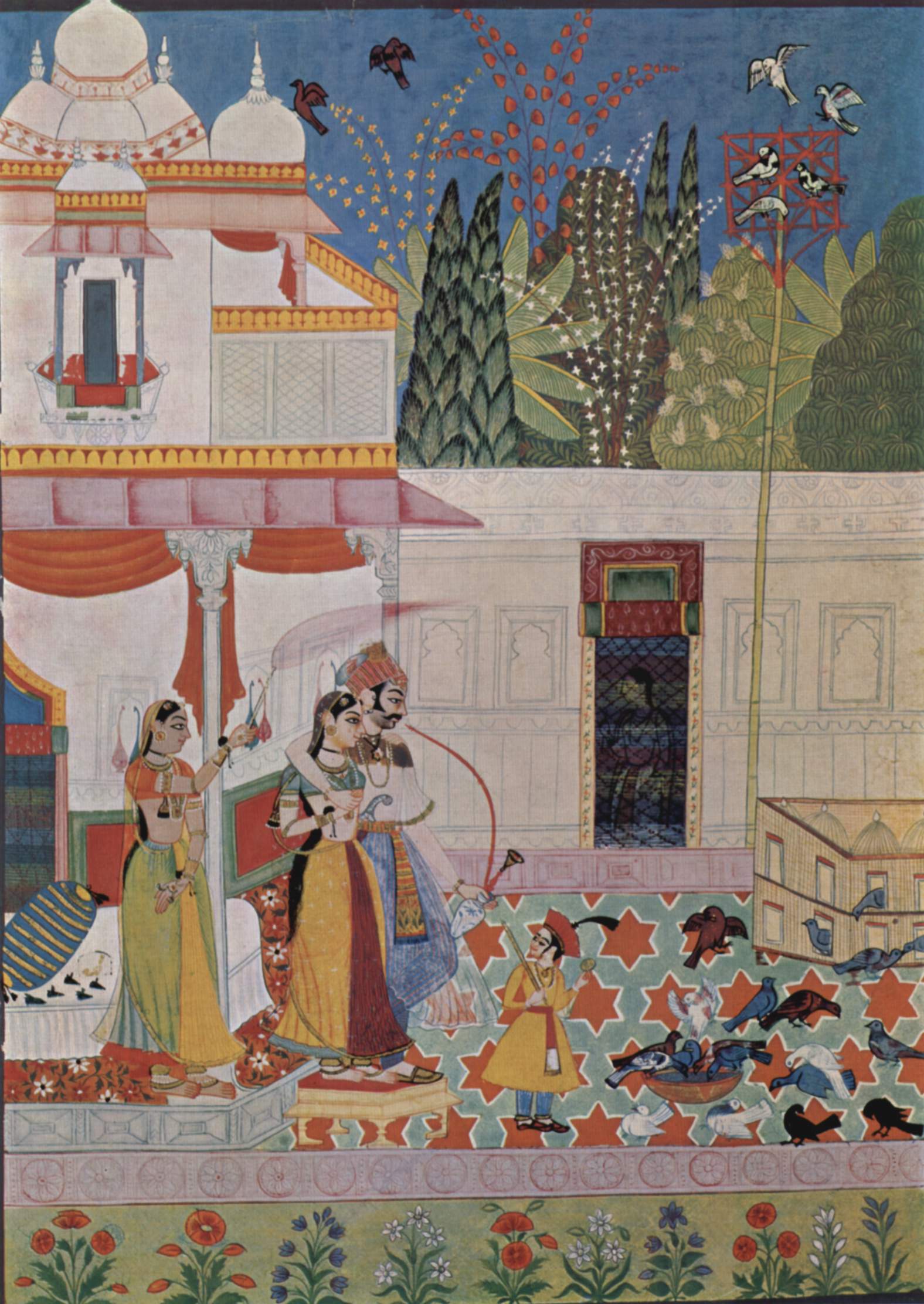1. Deccani Schools of Paintings :
Although contemporary to Mughal School they derived their conventional forms from the Vijaynagar and the Bijapur court paintings.
Important centres were at Ahmednagar, Bijapur (under patronage of Ibrahim Adil Shah) and Golconda (portraits showing the royal taste in fruits, scented flowers and pets.)
ADVERTISEMENTS:
2. Tanjore Style of Paintings :
It was developed under the royal patronage of Tanjore. Maratha rulers adherence to the cannon of iconography as paintings were made for ritual and worship (of Vishnu, Shiva and Krishna and not for display). It used pure colour in flat manner with background in red and green.
3. Patna Style of Paintings :
ADVERTISEMENTS:
Humayun was instrumental in laying the foundation of the Mughal style of painting out of which arose number of Kalam brush style, the Patna Kalam being one of them. Best known artists are Shiva Lai and Shiva Dayal.
Though Shiva Lai specialized in miniatures he also painted Indian festivals. His best being picture of a Mohammaden wedding.
The painters of the Patna Kalam knew how to extract colour from plants, barks, flowers, metal etc. They painted on glass mica and ivory sheets. Principal centres being Patna, Danapur and Arrah.
4. Madhubani Style of Paintings :
ADVERTISEMENTS:
A simple folk art of Mithila region of Bihar. It is tantrik in origin and depicts folklore in the mud wall yellow representing the earth, white warred fire, black air and blue sky.
The pictorial forms are the human representatives of Yantra, the root of Tantra.
5. Company Style of Paintings :
It developed at the behest of the officials of East India Company who introduced the Indian artists to the water colour technique for depicting Indian life and scenes of their liking. Such synthesis of western technique and the Indian form however resulted in works of low standard.

